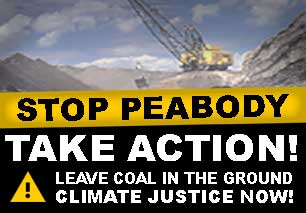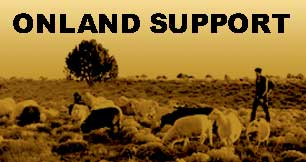FIRST NATIONS, FIRST RESISTANCE
September 12, 2009 by pathfinder
Filed under Latest Posts
FIRST NATIONS, FIRST RESISTANCE
A Snapshot of Life For Residents of the Big Mountain Regions of Black Mesa &
An Opportunity To Support Indigenous Resistance To U.S. Colonization in 2009
On behalf their peoples, their sacred ancestral lands, and future generations, more than 350 Dineh residents of Black Mesa continue to carry out a staunch resistance to the efforts of the US Government, which is acting in the interests of the Peabody Coal Company, to devastate whole communities and ecosystems and greatly de-stabilize our planet’s climate for the profit of an elite few. This land is the basis for the Black Mesa peoples’ traditions, livelihoods, and spirituality.
Indigenous nations are disproportionately targeted by fossil fuel extraction & environmental devastation and Black Mesa is no exception.
Cultural Sensitivity & Preparedness Guidebook + Registration Form
October 6, 2008 by pathfinder
Filed under Events, Latest Posts
Cultural Sensitivity & Preparedness Guidebook + Registration Form
This document is an in-depth guide that contains important information that you will need prior to and during your visit with a host family on Black Mesa. It gives you crucial information about what to expect, what to bring, and how to carry yourself while visiting Black Mesa. This guide covers how to be adequately prepared, background and current his/herstory, safety and legal issues, cultural sensitivity, code of conduct, and a suggested list of what to bring with you.
We ask all direct, on-land supporters of Black Mesa to thoroughly read over this guide and sign it. For Dine’, Hopi, & all other First Nations who understand and know traditional lifeways, there is additonal information in this guidebook for each person to review that is for the well-being of each participant. We want to ensure that each person is informed about the agreements & basic requests by families, is safe and accounted for, and that that we have your contact and emergency contact info in case of an emergency. It is of the utmost importance that you understand and respect the ways of the communities that you will be visiting. Please print out & bring this guidebook with you during your visit to Black Mesa. A heart-felt thank you for your support and have a good time on Black Mesa.
You must come prepared, and bring everything you will need. There is no electricity, no central heating, and no running water. Further down in this guide book you can find a list of suggestions for what you should bring with you to be prepared for your stay on Black Mesa.
Analysis of Dineh case & needs (Center for Constitutional Rights)
October 17, 2000 by pathfinder
Filed under Uncategorized
In continuing pursuit of a policy whose effects, if not means, are indistinguishable from
the ethnic cleansing and genocide visited on Native peoples throughout American history, the
United States seeks to relocate all Navajo (Dineh) people living on that portion of traditional
Navajo lands recently designated by the government to be for the exclusive use and occupancy of the Hopi.
Dineh travel to San Francisco to support Freedom of Religion
February 25, 2000 by pathfinder
Filed under Uncategorized
On Tuesday, February 22, 2000, forty Dineh elders and representatives
gathered at the Ninth Circuit of Appeals in San Francisco, CA for an Oral
argument in the Manybeads v. US lawsuit for Freedom of Religion. The hearing
began at 10:00 AM and two Judges were present, the third participated by
speakerphone. The Dineh and numerous supporters filled one courtroom and an
overflow courtroom equipped with a television monitor.
The Black Mesa Syndrome: Indian Lands, Black Gold
June 13, 1998 by pathfinder
Filed under Uncategorized
Black Mesa is not black and it is not a mesa. It is four thousand square miles of ginger-colored plateau land in northern Arizona, a distinct elevated landmass the shape of a bear’s paw. On a map, the Black Mesa coal field looks like an inkblot on a Rorschach test, following the contours of the Pleistocene lake it once was. Over thousands of years the vigorous forests and plant life embraced by the lake decayed into a bog which in turn hardened to coal–some twenty-one billion tons of coal, the largest coal deposit in the United States.
Until 1969, the coal lay untouched and so close to the surface that the walls of the dry washes glistened with seams of shiny black. With a long-term value estimated as high as $100 billion, it lies completely under Indian reservation lands, for Black Mesa is also home to some sixteen thousand Navajos and eight thousand Hopis. In 1966, the Hopi and Navajo tribal councils–not to be confused with the general tribal population–signed strip-mining leases with a consortium of twenty utilities that had designed a new coal-fired energy grid for the urban Southwest.


